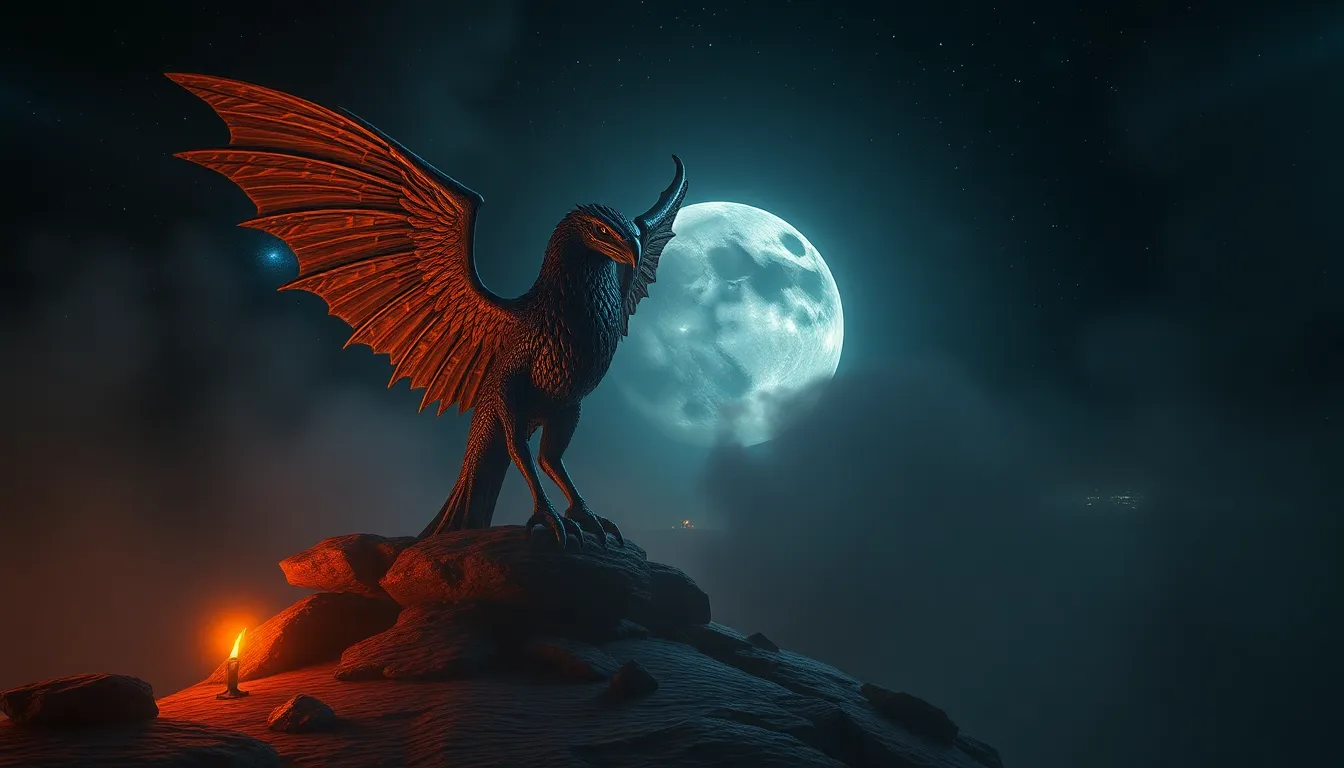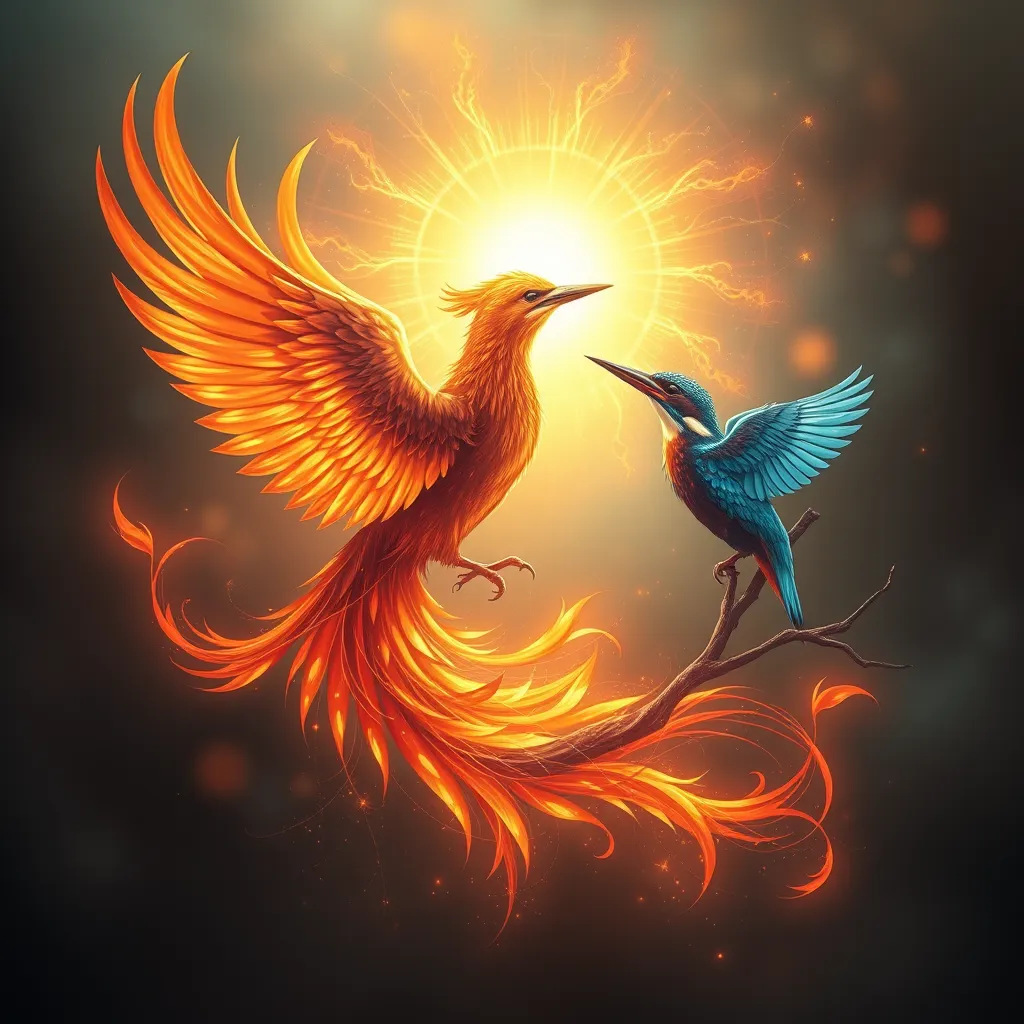The Roc in Arabian Nights: Mythical Terror or Magnificent Beast?
I. Introduction
The Roc, a giant bird of prey, holds a prominent place in Arabian mythology, captivating the imaginations of countless generations. This legendary creature embodies a complex duality, oscillating between terror and magnificence. The significance of the Roc transcends mere storytelling, representing cultural narratives that reflect human fears, aspirations, and the natural world. This article aims to explore the Roc’s dual nature as both a source of dread and a symbol of awe, delving into its historical context, characteristics, and cultural interpretations.
II. Historical Context of the Roc
The origins of the Roc can be traced back to early Arabian folklore, where it was often depicted as a formidable predator. Its mythos has been shaped by centuries of storytelling and has drawn comparisons to similar mythological creatures found in other cultures, such as the Griffin in Greek mythology and the Thunderbird in Native American lore.
The Roc gained particular prominence in the famous collection of Middle Eastern folk tales known as “One Thousand and One Nights” (also referred to as Arabian Nights). In these narratives, the Roc appears as a colossal bird, often associated with adventure and peril, highlighting the interplay between human ambition and the vastness of nature.
III. Descriptions and Characteristics of the Roc
The Roc is famously described as a gargantuan bird with an immense wingspan, capable of carrying off elephants and other large creatures. Its physical attributes are often emphasized in the tales, with descriptions that inspire both fear and fascination. Some key characteristics include:
- Size: The Roc is often depicted as being larger than any known bird, with wings that can obscure the sun.
- Appearance: Generally portrayed as having dark plumage and a sharp, menacing beak.
- Nesting habits: The Roc is said to build its nests atop high cliffs or treetops, often in remote regions.
Behaviorally, the Roc exhibits traits characteristic of apex predators. It is known for its hunting strategies, which include soaring high above the ground to spot prey and swooping down at incredible speeds to capture it. Symbolically, the Roc represents not only raw power and ferocity but also the majesty of nature and the freedom that comes with flight.
IV. The Roc as a Symbol of Terror
Throughout various tales, the Roc’s destructive power serves as a reminder of nature’s unpredictability and the potential for chaos. Instances of the Roc causing devastation include:
- Carrying away sailors: In some stories, the Roc snatches sailors from ships, leading to their demise.
- Destroying crops: The massive wings of the Roc can create storms, uprooting fields and causing famine.
The fear and awe that the Roc instills in characters within these narratives often drive the plot forward, creating tension and conflict. Moreover, the Roc’s actions frequently convey moral lessons or warnings about hubris, emphasizing the need for respect toward the natural world and its forces.
V. The Roc as a Magnificent Beast
Despite its terrifying aspects, the Roc is also portrayed as a magnificent creature that embodies beauty and majesty. In several stories, the Roc’s grandeur is celebrated through vivid imagery and poetic language. Key themes include:
- Beauty and majesty: The sight of the Roc soaring through the skies evokes feelings of wonder and admiration.
- Symbolism of strength and freedom: The Roc represents the ultimate expression of freedom, unbound by the constraints of the earth.
- Positive interactions: In some tales, characters have harmonious relationships with the Roc, highlighting its noble qualities.
These aspects contribute to the Roc’s role as a symbol of the sublime, where beauty is intertwined with the potential for destruction.
VI. Cultural Interpretations of the Roc
The portrayal of the Roc varies significantly across cultures, reflecting local beliefs and values. In Western adaptations, the Roc is often simplified or exaggerated for entertainment purposes, while in Eastern traditions, it retains a more complex representation. Some notable interpretations include:
- Art: The Roc has been depicted in various forms of art, from medieval manuscripts to contemporary illustrations, often emphasizing its grandeur.
- Popular media: The Roc has appeared in films, video games, and literature, showcasing its enduring appeal as a mythical creature.
In contemporary storytelling, the Roc continues to inspire new narratives and adaptations, reflecting its relevance in modern culture and its ability to resonate with contemporary audiences.
VII. Conclusion
The Roc, as depicted in Arabian Nights, embodies a fascinating duality that captures both terror and magnificence. This mythical creature serves as a powerful symbol of the forces of nature, representing humanity’s deep-seated fears and aspirations. The enduring legacy of the Roc in mythology and popular culture highlights the importance of such mythical creatures in understanding the human experience, reminding us of our place within the natural world and the awe it inspires.
VIII. Further Reading and Resources
- Recommended texts: “Arabian Nights” translated by Richard Burton; “The Book of the Thousand Nights and a Night” translated by Sir Richard Francis Burton.
- Scholarly articles: Look for analyses on the Roc in academic journals focusing on folklore and mythology.
- Modern adaptations: Explore contemporary retellings in novels and films that feature the Roc, such as fantasy literature and animated movies.



